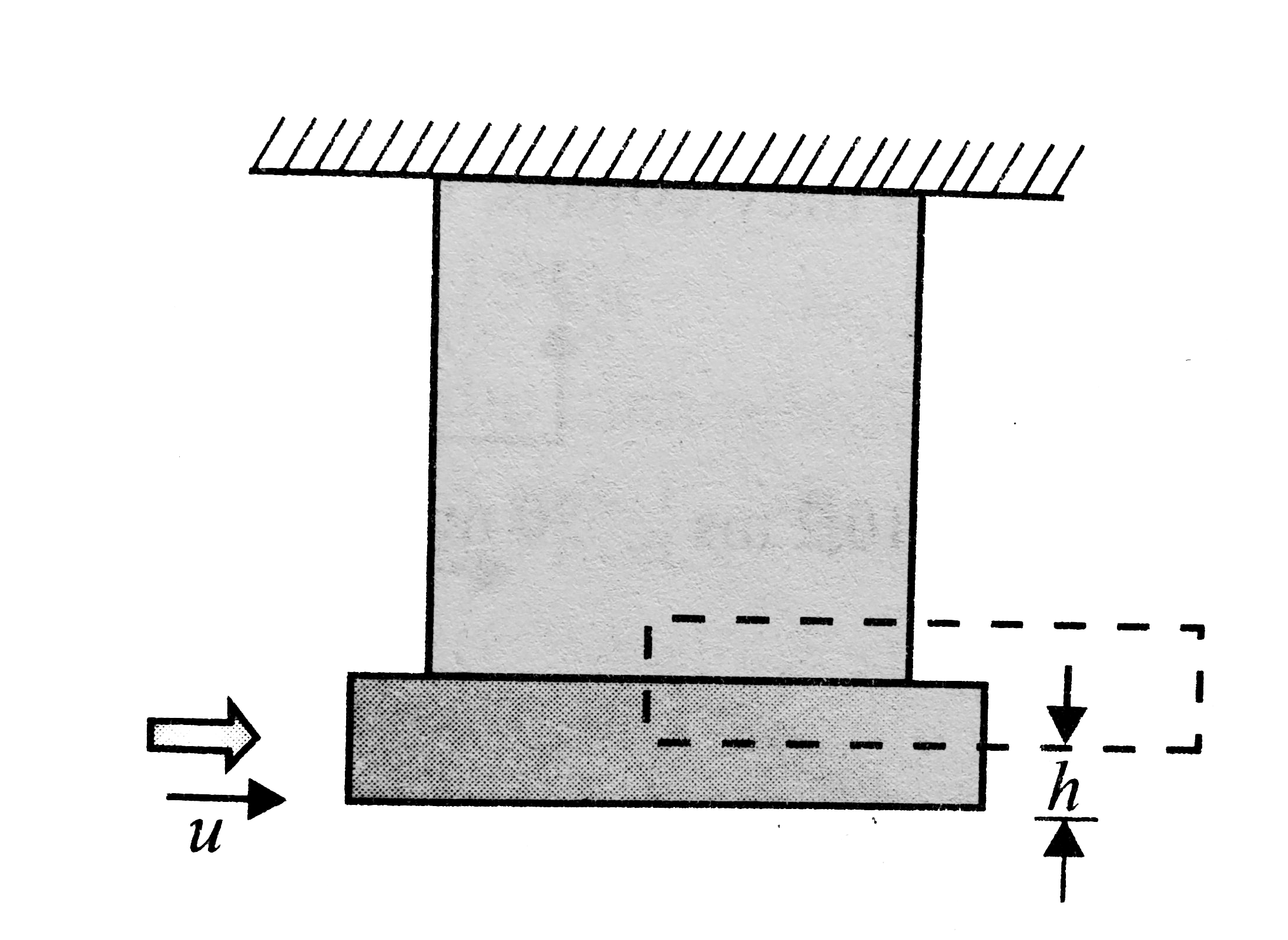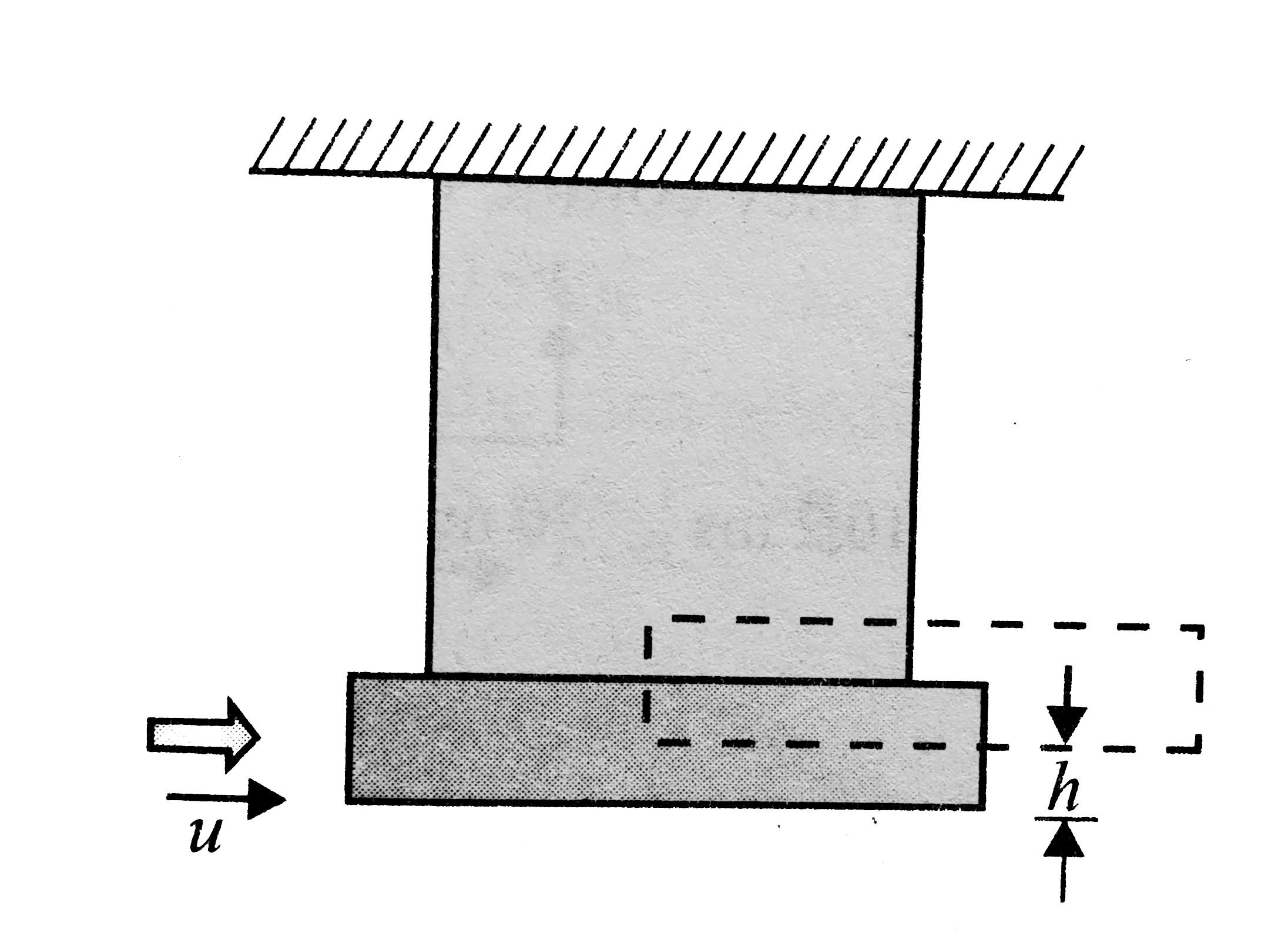In which case bodies become hot due to mechanical energy losses
(i) Rub our hands for sometimes
(ii) Two vehicles collied with each other
(iii) Aeroplane crases
(iv) Sliding of legs on roof surface
(v) Transfer of energy from hot energy from hot body to cold body
The correct Answer is:B
To determine in which case bodies become hot due to mechanical energy losses, we will analyze each option step by step.
Step 1: Analyze the first case - Rubbing our hands
When we rub our hands together, we create friction. This friction converts kinetic energy (from the motion of rubbing) into thermal energy, causing our hands to warm up. However, this process is primarily physical and not classified as mechanical energy loss in the context of this question.
Hint: Consider whether the energy transformation involves a physical process or a mechanical one.
Step 2: Analyze the second case - Two vehicles colliding
In a collision between two vehicles, kinetic energy is involved. Depending on the type of collision (elastic or inelastic), some energy may be transformed into sound, heat, or deformation. However, this does not specifically refer to mechanical energy loss, as the primary focus is on the kinetic energy of the vehicles.
Hint: Think about the type of energy involved in collisions and whether it qualifies as mechanical energy loss.
Step 3: Analyze the third case - Aeroplane crashes
An airplane crash is also a collision event. Similar to the previous case, the kinetic energy is involved, and energy may be lost in the form of sound and heat. However, it is still not categorized as mechanical energy loss.
Hint: Reflect on whether the energy loss in crashes is due to mechanical processes or other forms of energy transformation.
Step 4: Analyze the fourth case - Sliding of legs on the roof surface
When sliding legs on a roof surface, friction occurs between the legs and the surface. This friction is a mechanical force that converts kinetic energy into thermal energy, resulting in heat generation. Therefore, this case is a clear example of mechanical energy loss.
Hint: Identify if friction is present and how it contributes to energy transformation in this scenario.
Step 5: Analyze the fifth case - Transfer of energy from hot body to cold body
This scenario describes thermal conduction, where heat energy is transferred from a hot object to a cold object. This process does not involve mechanical energy loss; instead, it is a thermal process.
Hint: Consider the nature of energy transfer and whether it involves mechanical energy loss or thermal conduction.
Conclusion
After analyzing all the cases, the only scenario where bodies become hot due to mechanical energy losses is the fourth case: sliding of legs on the roof surface.
Final Answer: The correct option is (iv) Sliding of legs on roof surface.
When we rub our hands together, we create friction. This friction converts kinetic energy (from the motion of rubbing) into thermal energy, causing our hands to warm up. However, this process is primarily physical and not classified as mechanical energy loss in the context of this question.
In a collision between two vehicles, kinetic energy is involved. Depending on the type of collision (elastic or inelastic), some energy may be transformed into sound, heat, or deformation. However, this does not specifically refer to mechanical energy loss, as the primary focus is on the kinetic energy of the vehicles.
An airplane crash is also a collision event. Similar to the previous case, the kinetic energy is involved, and energy may be lost in the form of sound and heat. However, it is still not categorized as mechanical energy loss.
When sliding legs on a roof surface, friction occurs between the legs and the surface. This friction is a mechanical force that converts kinetic energy into thermal energy, resulting in heat generation. Therefore, this case is a clear example of mechanical energy loss.
This scenario describes thermal conduction, where heat energy is transferred from a hot object to a cold object. This process does not involve mechanical energy loss; instead, it is a thermal process.
After analyzing all the cases, the only scenario where bodies become hot due to mechanical energy losses is the fourth case: sliding of legs on the roof surface.
Topper's Solved these Questions
- BOOK - RESONANCE ENGLISHCHAPTER - THERMODYNAMICSEXERCISE - Exercise -2 Part-I: Only one option correct type23videos
THERMODYNAMICS
- BOOK - RESONANCE ENGLISHCHAPTER - THERMODYNAMICSEXERCISE - Exercise-2 II: Single and double value integer type16videos
THERMODYNAMICS
- BOOK - RESONANCE ENGLISHCHAPTER - THERMODYNAMICSEXERCISE - H-11videos
THERMODYNAMICS
- BOOK - RESONANCE ENGLISHCHAPTER - TEST SERIESEXERCISE - CHEMISTRY50videos
TEST SERIES
Similar Questions
A body is projected from ground with velocity u making an angle θ with horizontal. Horizontal range of body is four time to maximum height attained by body. Find out
(i) angle of projection
(ii) Range and maximum height in terms of u
(iii) ratio of kinetic energy to potential energy of body at maximum heightView SolutionA ballistic pendulum is a device that was used to measure the speeds of bullets before the development of electronic tiring, devices. The device consists of a large block of wood of mass M, hanging from two long cords. A bullet of mass m is fired into the block. the bullet comes quickly into rest and the block + bullet rises to a vertical distance h before the pendulum comes momentarily to rest as the ends of the arc. ltbr> In the process. the linear momentum is conserved. In such a collision. some kinetic energy is dissipated as heat: so mechanical energy is not conserved. When there is a loss in mechanical energy, the collision is said to be inelastic. Further when two bodies coalesce, the collision is said to be perfectly inelastic.

The energy dissipated as heat in the collision isView SolutionDraw a schematic arrangement for winding of primary and secondary coil in a transformer when the two coils are wound on top of each other.
(ii) State the underlying principle of a transformer and obtain the expression for the ratio of secondary to primary voltage in terms of the
(a) number of secondary and primary windings and
(b) primary and secondary currents.
(iii) Write the main assumption involved in deriving the above relations.
(iv) Write any two reasons due to which energy losses may occur in actul transformers.View SolutionSTATEMENT-1 : Two bodies of mass M and 2M released from rest and they move towards each other due to their mutual gravitational force of attraction and collide at mid point.
STATEMENT-2 : If the total mechanical energy of a body is zero than its linear momentum is necessarily non zero at any point other than reference point.
STATEMENT-3 : The linear momentum of the bob of a simple pendulum suspended by the roof of a car accelerating on a horizontal road increases due to tension in the string of the pendulum.View SolutionThe ends of a long bar are maintained at different temperatures and there is no loss of heat from the sides of the bar due to conduction or radiation. The graph of temperature against distance of the bar when it has attained steady state is shown here. The graph shows (i) the temperature gradient is not uniform.
(ii) the bar has uniform cross-sectional area.
(iii) the cross-sectional area of the bar increases as the distance from the hot end increases.
(iv) the cross-sectional area of the bar becreases as the distance from the hot end increasesView SolutionA ballistic pendulum is a device that was used to measure the speeds of bullets before the development of electronic tiring, devices. The device consists of a large block of wood of mass M, hanging from two long cords. A bullet of mass m is fired into the block. the bullet comes quickly into rest and the block + bullet rises to a vertical distance h before the pendulum comes momentarily to rest as the ends of the arc. ltbr> In the process. the linear momentum is conserved. In such a collision. some kinetic energy is dissipated as heat: so mechanical energy is not conserved. When there is a loss in mechanical energy, the collision is said to be inelastic. Further when two bodies coalesce, the collision is said to be perfectly inelastic.

After collision what is the combined velocity of the bullet + block system?View SolutionFind out which among the following is true and which is false
(i) Recombinant DNA technology has made it possible to engineer microbes, plants and animals such that they have novel capabilities.
(ii) Genetically modified organisms have been created by using methods other than natural methods to transfer one or more genes from organism to another, generally using techniques such as recombinant DNA technology.
(iii) GM plants have been useful in increasing crop yields, reduce post harvest losses and make crops more tolerant of stressess.
(iv) Recombinant DNA technology process have made immense impact in the area of healthcare by enabling mass production of safe and more effective therapeutics.
(v) since the recombinant therapeutics are identical to human proteins, they do not induced unwanted immunological responses.View SolutionShow that the sum of kinetic energy and potential energy (ie, total mechanical energy) is always conserved in the case of a freely falling body under gravity (with air resistance neglected from a height by finding it when (i) the body is at the top c) the body has fallen a distance in the body has reached the ground.
View SolutionA heated body maitained at T K emits thermal radiation of total energy E with a maximum intensity at frequency v. The emissivity of the material is 0.5. If the temperature of the body be increased and maintained at temperature 3T K, then :-
(i) The maximum intensity of the emitted radiation will occur at frequency v/3
(ii) The maximum intensity of the emitted radiation will occur at frequency 3v.
(iii) The total energy of emitted radiation will become 81 E
(iv) The total energy of emitted radiation will become 27 EView SolutionMark the correct statement (i) Escape velocity does not depend on mass of body
(ii) If total energy of a satellite becomes positive , it escape from earth .
(iii) Orbit of geostationary orbit is called parking orbitView Solution

